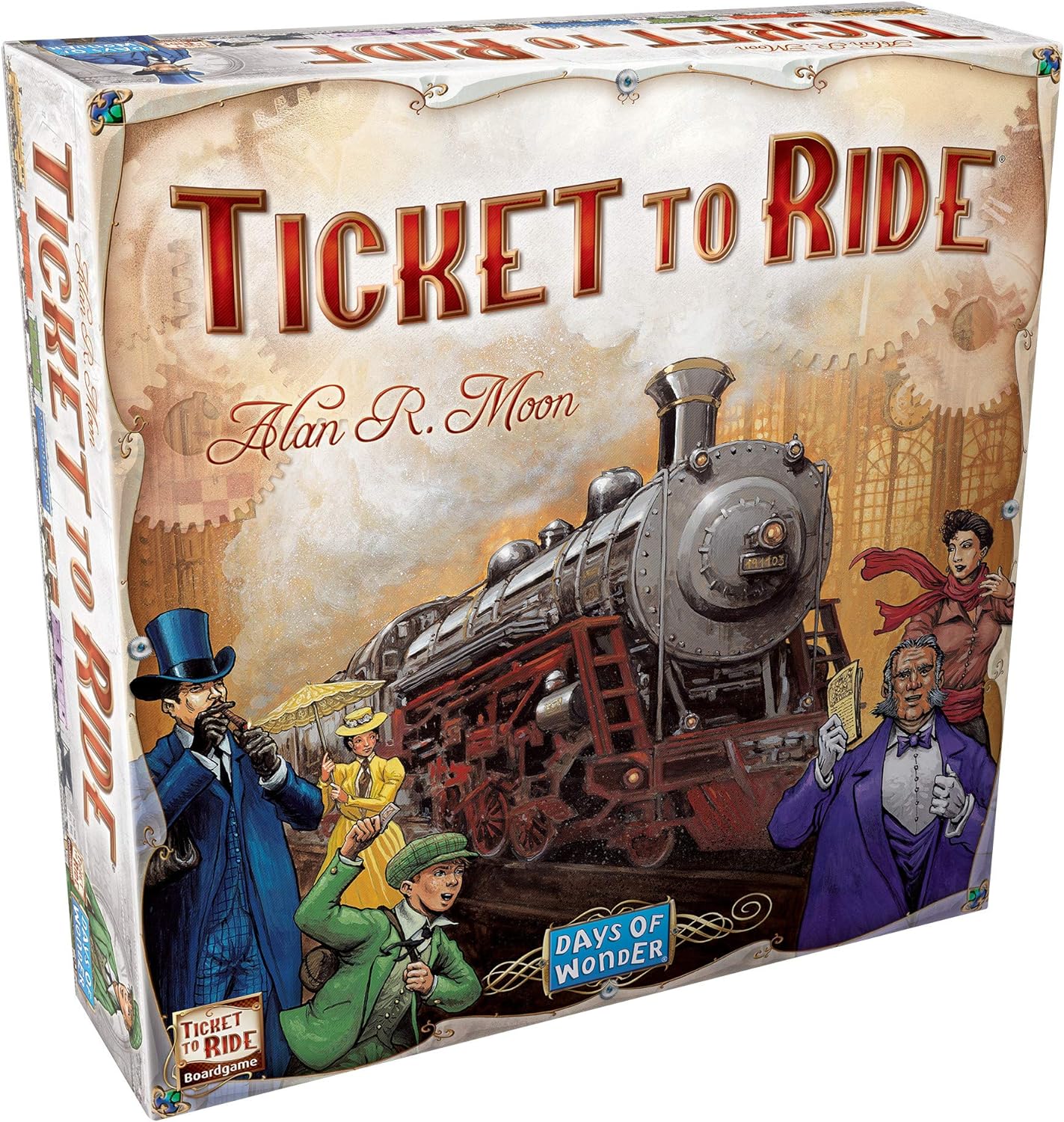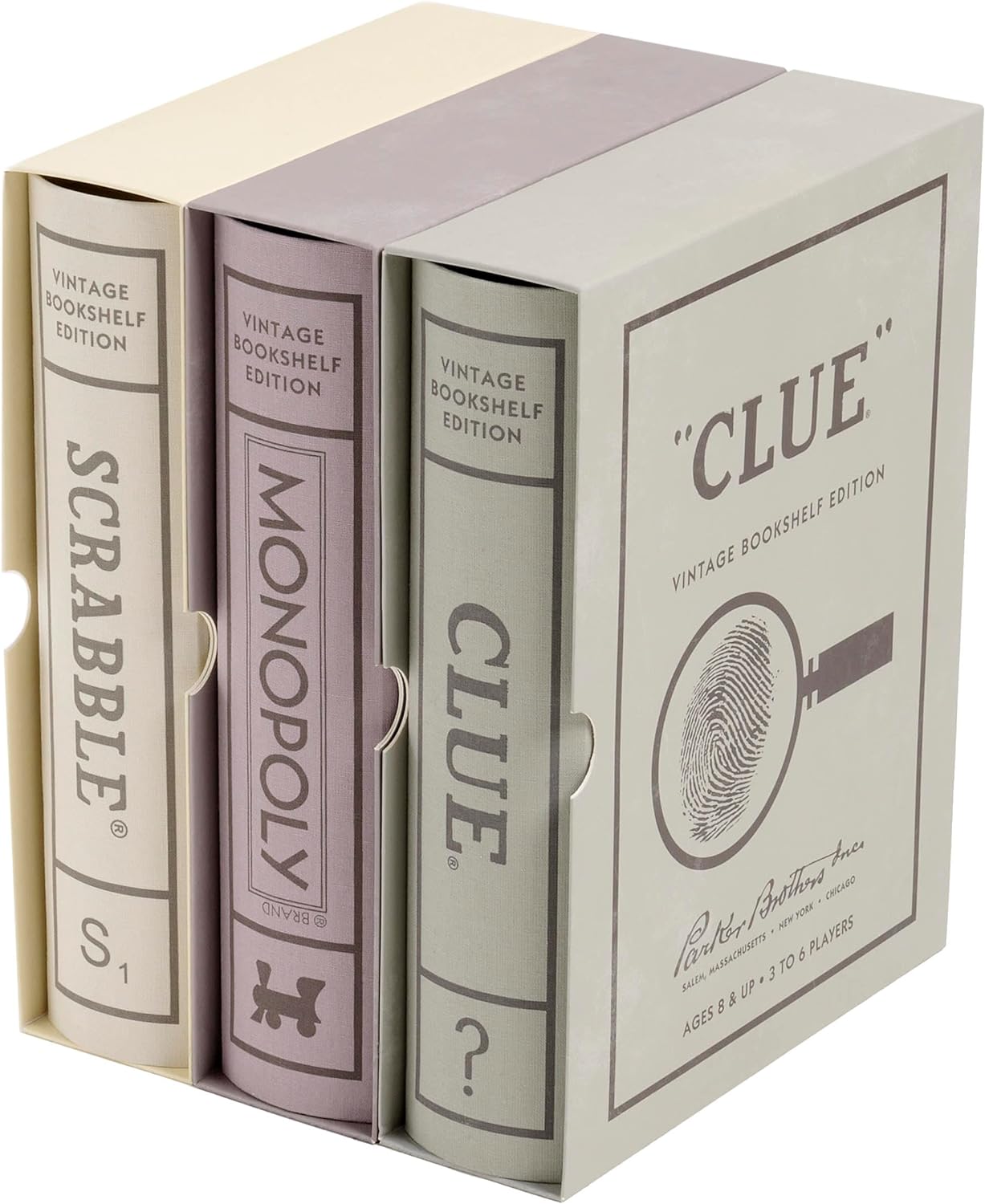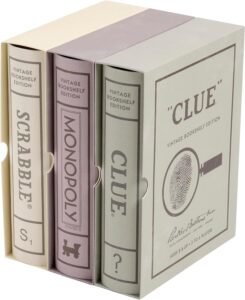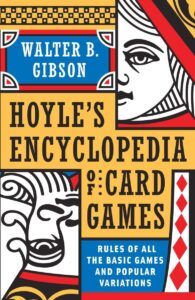Monopoly is one of the most famous and enduring board games in history. Created by Charles Darrow during the Great Depression in 1935, it quickly became a household staple. The game’s origins can be traced back to an earlier version called “The Landlord’s Game,” created by Elizabeth Magie in 1903 to illustrate the economic consequences of land ownership and monopolies. Despite its humble beginnings, Monopoly became a symbol of American capitalism and has since been translated into numerous editions and languages worldwide.
Game Overview
- Publisher: Hasbro
- Designer: Charles Darrow
- Release Year: 1935 (first commercial version)
- Number of Players: 2-8
- Playtime: 60-180 minutes (depending on house rules and number of players)
- Ages: 8+
- Mechanics: Roll-and-move, Property Trading, Auctioning, Set Collection, Player Elimination
- Complexity: Medium
How to Play
Objective
The goal of Monopoly is simple: bankrupt your opponents by owning properties, collecting rent, and making savvy trades.
Setup
- Lay the game board on a flat surface.
- Place the Community Chest and Chance cards face down in their respective spots.
- Each player chooses a token and places it on the “GO” square.
- Assign one player to be the banker. The banker hands out $1500 to each player (in specific denominations).
- Players roll dice to determine who goes first.
Gameplay
- Roll and Move: Players take turns rolling two six-sided dice and move their token the corresponding number of spaces.
- Property Acquisition: If you land on an unowned property, you can buy it from the bank. If another player owns it, you must pay rent.
- Building Houses and Hotels: Once a player owns all properties in a color group, they can begin building houses and hotels to increase rent.
- Chance and Community Chest Cards: Landing on these squares requires players to draw a card, which can offer rewards, penalties, or move the player around the board.
- Jail: Players can land in jail by drawing a card or rolling three consecutive doubles. They can get out by rolling doubles, paying a fine, or using a “Get Out of Jail Free” card.
- Winning the Game: The game ends when all but one player has gone bankrupt.
Details (Cards, Pieces, etc.)
- Tokens: Classic tokens include the top hat, racecar, dog, and iron. Over the years, more tokens have been added.
- Properties: 28 unique properties divided into color groups.
- Cards: 16 Chance cards and 16 Community Chest cards.
- Money: Paper currency in various denominations ($1, $5, $10, $20, $50, $100, $500).
- Houses & Hotels: 32 green houses and 12 red hotels to build on properties.
Variations of the Game
Monopoly has spawned numerous versions, including:
- Monopoly Junior (simplified for younger players)
- Monopoly Deal (a fast-paced card game version)
- Monopoly City (adds buildings and city planning mechanics)
- Themed Editions: Versions based on popular franchises like Harry Potter, Star Wars, Marvel, Lord of the Rings and Game of Thrones.
Strategy Tips
- Focus on Property Groups: Owning all properties in a color group allows you to build houses and collect higher rent.
- Balance Building and Cash: Avoid overbuilding too early, as you’ll need liquid cash to pay rent and fines.
- Strategic Trading: Trading with other players is key. Offer favorable trades when necessary but don’t over-leverage your properties.
- Watch Opponents’ Moves: Keep track of what other players own and adjust your strategy accordingly.
Pros & Cons
Pros
- Classic gameplay that’s easy to understand.
- High replay value with friends or family.
- Teaches negotiation and money management skills.
Cons
- Can be too long, especially with more players.
- Player elimination can leave some waiting for a long time.
- Relies heavily on luck due to dice rolling.
Who Will Enjoy This Game
Monopoly appeals to those who enjoy economic strategy, property management, and negotiation. Fans of classic board games and anyone who likes a bit of friendly competition will find Monopoly engaging.
Recommended Age Groups
The standard version of Monopoly is best for players aged 8 and up. For younger children, Monopoly Junior offers a simplified experience that is easier to follow.
Similar Games
- The Game of Life: Another classic that simulates life events and decisions.
- Catan: A resource-management and trading game, often seen as a more modern take on economic strategy.
- Risk: A strategy game focused on world domination through military conquest.
User Reviews
- “A family favorite for decades. It’s a great way to spend an afternoon, although the game can go on for hours.” – ★★★★☆
- “I love the strategy involved, but sometimes the dice just aren’t on your side!” – ★★★★☆
- “Monopoly has been a staple at our family gatherings. Always competitive!” – ★★★★★
FAQs
Q: Can Monopoly be played with fewer than 4 players?
A: Yes, it can be played with as few as 2 players, though the dynamic changes with fewer opponents.
Q: What happens if you run out of houses or hotels?
A: The physical number of houses and hotels is a game limit, so players will have to wait for others to return them to the bank.
Q: Are house rules allowed in Monopoly?
A: Yes! Many families adopt house rules (like Free Parking jackpots) to add their own twist to the game.
Final Verdict
Monopoly remains one of the best-selling and most recognizable board games for good reason. Its balance of luck and strategy, coupled with the thrill of owning properties and collecting rent, makes it a fun, competitive experience for families and friends. While it can drag on with more players, house rules and newer editions can add a fresh twist to the gameplay. If you haven’t yet added Monopoly to your collection, it’s well worth the investment—get yours today at Amazon!






Post Comment